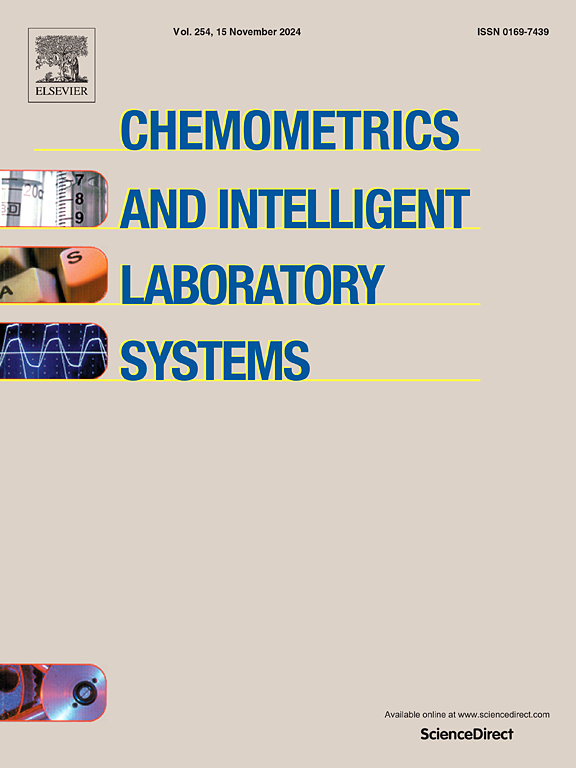基于图残差的分子性质预测方法
IF 3.8
2区 化学
Q2 AUTOMATION & CONTROL SYSTEMS
Chemometrics and Intelligent Laboratory Systems
Pub Date : 2025-07-01
DOI:10.1016/j.chemolab.2025.105471
引用次数: 0
摘要
机器学习驱动的化学性质预测方法已经引起了人们的极大兴趣。然而,要提高关键应用的泛化能力、准确性和推理时间,还有很多工作要做。传统的机器学习模型基于从分子中提取的特征来预测属性,这些特征通常不容易获得。在这项工作中,一种新的深度学习方法,边缘条件残差图神经网络(ECRGNN),已经被应用,使我们能够直接预测分子的性质,只有基于图的结构。本研究采用分子的SMILES (Simplified Molecular Input Line Entry System)表示作为输入数据格式,并将其进一步转换为图形数据库,构成训练数据。本文重点介绍了一种新的基于GRU(门控循环单元)的方法,ECRGNN,用于映射已使用的输入。重点强调了回归属性和分类功效。详细介绍了变分自编码器(VAE)和用于多类多标签属性预测的端到端学习方法。结果与标准基准数据集和一些新开发的数据集进行了比较。已使用的所有性能指标都已明确定义,以及选择它们的原因。本文章由计算机程序翻译,如有差异,请以英文原文为准。
Graph residual based method for molecular property prediction
Machine learning-driven methods for chemical property prediction have been of deep interest. However, much work remains to be done to improve the generalization ability, accuracy, and inference time of critical applications. Traditional machine learning models predict properties based on the features extracted from the molecules, which are often not readily available. In this work, a novel deep learning method, the Edge Conditioned Residual Graph Neural Network (ECRGNN), has been applied, allowing us to predict properties directly only the Graph-based structures of the molecules. SMILES (Simplified Molecular Input Line Entry System) representation of the molecules has been used in the present study as input data format, which has been further converted into a graph database, constituting the training data. This article highlights a detailed description of the novel GRU (Gated Recurrent Unit) - based methodology, ECRGNN, to map the inputs that have been used. Emphasis is placed on highlighting both the regressive property and the classification efficacy of the same. A detailed description of the Variational Autoencoder (VAE) and the end-to-end learning method used for multi-class multi-label property prediction has also been provided. The results have been compared with standard benchmark datasets and some newly developed datasets. All performance metrics that have been used have been clearly defined, and their reason for choice.
求助全文
通过发布文献求助,成功后即可免费获取论文全文。
去求助
来源期刊
CiteScore
7.50
自引率
7.70%
发文量
169
审稿时长
3.4 months
期刊介绍:
Chemometrics and Intelligent Laboratory Systems publishes original research papers, short communications, reviews, tutorials and Original Software Publications reporting on development of novel statistical, mathematical, or computer techniques in Chemistry and related disciplines.
Chemometrics is the chemical discipline that uses mathematical and statistical methods to design or select optimal procedures and experiments, and to provide maximum chemical information by analysing chemical data.
The journal deals with the following topics:
1) Development of new statistical, mathematical and chemometrical methods for Chemistry and related fields (Environmental Chemistry, Biochemistry, Toxicology, System Biology, -Omics, etc.)
2) Novel applications of chemometrics to all branches of Chemistry and related fields (typical domains of interest are: process data analysis, experimental design, data mining, signal processing, supervised modelling, decision making, robust statistics, mixture analysis, multivariate calibration etc.) Routine applications of established chemometrical techniques will not be considered.
3) Development of new software that provides novel tools or truly advances the use of chemometrical methods.
4) Well characterized data sets to test performance for the new methods and software.
The journal complies with International Committee of Medical Journal Editors'' Uniform requirements for manuscripts.

 求助内容:
求助内容: 应助结果提醒方式:
应助结果提醒方式:


